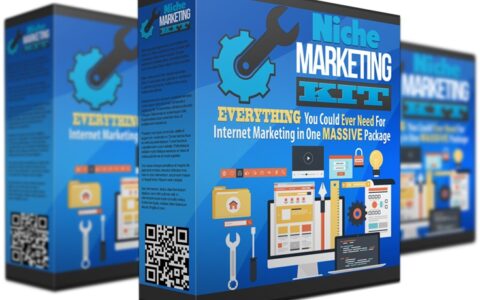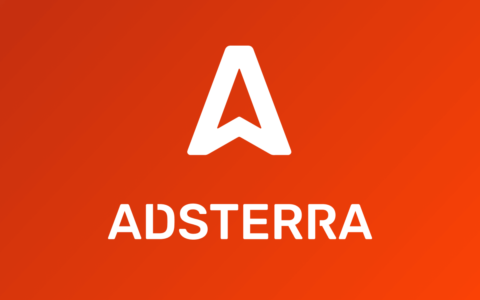In today’s fast-paced digital world, email marketing remains a powerful tool for businesses to engage with customers, build lasting relationships, and generate revenue. Whether you’re a seasoned marketer or just starting out, understanding the fundamentals of email marketing and leveraging the power of efficient tools like MailChimp (www.mailchimp.com) can help you maximize your online earning potential. In this blog post, we’ll explore the ins and outs of email marketing, discuss the features and benefits of using MailChimp, and examine alternatives to ensure you find the right fit for your unique needs.
I. Understanding Email Marketing
A. Importance of email marketing in today’s digital landscape
Despite the rise of social media and instant messaging, email marketing remains a crucial element in the digital marketing mix. With a global audience of over 4 billion email users, it offers an unparalleled opportunity to reach potential customers. Email marketing is not only cost-effective but also allows businesses to establish direct, personalized communication with their audience. Moreover, it boasts an impressive return on investment (ROI), with studies showing an average ROI of $42 for every $1 spent on email marketing.
B. Key components of a successful email marketing campaign
- Targeted audience: Identifying and segmenting your audience allows you to create tailored content that resonates with them, increasing engagement and conversion rates.
- Compelling subject lines: A captivating subject line is crucial for enticing subscribers to open your emails. Keep them short, relevant, and attention-grabbing to maximize open rates.
- High-quality content: Provide valuable, relevant, and engaging content that addresses your audience’s needs and preferences. This can include educational materials, promotional offers, industry news, or entertaining stories.
- Personalization: Personalized emails help to build a connection with your audience and boost conversion rates. Use subscriber data, such as their name or past interactions, to create a customized experience.
- Mobile optimization: With the majority of users accessing emails on their mobile devices, it is vital to ensure that your emails are mobile-friendly with responsive design and easily readable text.
- Strong call-to-action (CTA): Encourage your audience to take a specific action, such as making a purchase, signing up for an event, or visiting your website, with a clear and persuasive CTA.
- Testing and analysis: Continuously test different elements of your campaigns, such as subject lines or design, and analyze the results to optimize your strategy and improve performance.
C. How email marketing can help you make money online
- Promoting products or services: Use email marketing to showcase your offerings, announce new launches, and share special promotions to drive sales.
- Affiliate marketing: Earn commissions by promoting other businesses’ products or services to your email subscribers and encouraging them to make a purchase through your unique affiliate link.
- Sponsored content: Partner with brands to include sponsored content in your newsletters, such as product reviews or advertisements, and charge a fee for the exposure.
- Selling digital products: Create and sell digital products like ebooks, online courses, or templates directly to your email subscribers.
- Building customer loyalty: Strengthen relationships with your audience by providing valuable content, exclusive deals, and exceptional customer service. Loyal customers are more likely to make repeat purchases and refer new customers to your business.
II. Introduction to MailChimp
A. Background and history of MailChimp
MailChimp was founded in 2001 by Ben Chestnut and Dan Kurzius, initially as a side project to their web design business. What started as a simple email marketing tool has now evolved into a comprehensive marketing platform that serves millions of customers worldwide. Headquartered in Atlanta, Georgia, MailChimp has become one of the most popular email marketing services, catering to small businesses, non-profits, and enterprises alike.
Over the years, MailChimp has continuously expanded its feature set, adding automation, segmentation, and analytics capabilities to its platform. In 2017, they rebranded as an all-in-one marketing platform, integrating social media management, landing pages, and CRM (customer relationship management) functionalities to cater to their customers’ growing needs.
B. Why MailChimp is a popular choice for email marketing
- Easy-to-use interface: MailChimp’s intuitive drag-and-drop email builder and template library make it simple for users to design professional-looking emails without any coding experience.
- Flexible pricing plans: With a generous free plan and scalable pricing options, MailChimp caters to businesses of all sizes, making it an attractive choice for those just starting out or looking to minimize costs.
- Automation capabilities: MailChimp offers robust automation features, enabling businesses to set up email workflows, schedule campaigns, and send personalized content based on subscriber behavior.
- Integration options: MailChimp’s extensive library of integrations with popular apps and services, such as Shopify, WordPress, and Salesforce, allows users to streamline their marketing efforts and improve efficiency.
- Advanced analytics and reporting: MailChimp provides detailed analytics on campaign performance, subscriber engagement, and e-commerce tracking, enabling businesses to make data-driven decisions and optimize their email marketing strategies.
- Extensive resources and support: With a vast knowledge base, video tutorials, and responsive customer support, MailChimp ensures that users have access to the information and assistance they need to succeed in their email marketing endeavors.
III. MailChimp Features
A. List management and segmentation
MailChimp offers efficient list management features that allow users to import, manage, and maintain their subscriber lists with ease. Additionally, MailChimp’s segmentation feature enables users to create targeted groups based on various criteria, such as demographics, subscriber engagement, or purchase history. This allows businesses to deliver personalized and relevant content to different segments of their audience, resulting in higher engagement and conversion rates.
B. Email templates and design tools
MailChimp provides a wide selection of pre-designed email templates, suitable for various industries and campaign types. Users can also create their own custom templates using the platform’s intuitive drag-and-drop email builder. This tool allows for easy customization of text, images, and layout without any coding knowledge. Furthermore, MailChimp offers a built-in photo editor, enabling users to make adjustments to their images directly within the email builder.
C. Automation and scheduling
With MailChimp’s automation capabilities, users can create a variety of automated email workflows, such as welcome series, abandoned cart reminders, or re-engagement campaigns. The platform also supports scheduling, allowing businesses to plan and send their email campaigns at the most optimal times for their audience. This ensures that subscribers receive content when they are most likely to engage with it, improving overall campaign performance.
D. Analytics and reporting
MailChimp offers comprehensive analytics and reporting features, providing users with valuable insights into their email marketing performance. Users can access detailed reports on open rates, click-through rates, subscriber growth, and more. Additionally, MailChimp provides e-commerce tracking, enabling businesses to measure the revenue generated by their email campaigns. These insights help users identify areas of improvement and make data-driven decisions to optimize their email marketing strategies.
E. Integrations and add-ons
MailChimp boasts a wide array of integrations and add-ons, allowing users to connect their email marketing efforts with other tools and platforms they already use. With integrations for popular apps and services such as Shopify, WordPress, Zapier, and Google Analytics, MailChimp helps businesses streamline their marketing workflows and improve overall efficiency. Users can also explore MailChimp’s extensive API documentation to create custom integrations and further enhance the platform’s capabilities.
IV. Pros of Using MailChimp
A. User-friendly interface
One of the primary advantages of using MailChimp is its user-friendly interface. The platform’s intuitive drag-and-drop email builder makes it easy for users of all skill levels to create and design professional-looking emails without any coding experience. The dashboard is clean and well-organized, allowing users to navigate through various features and settings with ease.
B. Scalable pricing plans
MailChimp offers a range of pricing plans to suit businesses of all sizes and budgets. The platform provides a generous free plan that accommodates up to 2,000 subscribers and 10,000 monthly email sends, making it an attractive option for small businesses and startups. As your business grows, you can upgrade to one of MailChimp’s paid plans, which offer additional features and increased sending limits to support your expanding email marketing needs.
C. Comprehensive support and resources
MailChimp offers extensive resources and support to help users succeed in their email marketing endeavors. The platform features a vast knowledge base, complete with articles, guides, and video tutorials covering various aspects of email marketing and the MailChimp platform. Users can also access responsive customer support via email and live chat for more personalized assistance. Additionally, MailChimp’s community forum provides a space for users to connect, share experiences, and learn from one another.
D. Regular updates and improvements
MailChimp is committed to continuous innovation and improvement, regularly updating its platform with new features, enhancements, and bug fixes. This ensures that users have access to the latest tools and technologies, enabling them to stay competitive in the ever-evolving digital marketing landscape. MailChimp also listens to user feedback and makes an effort to implement changes that cater to the needs and preferences of its diverse customer base.
V. Alternatives to MailChimp
A. AWeber
AWeber is a popular email marketing platform that caters primarily to small businesses and entrepreneurs. It offers a wide range of features, including an easy-to-use drag-and-drop email builder, automation capabilities, and a vast library of pre-designed templates. AWeber’s pricing plans are based on the number of subscribers, making it a cost-effective solution for small businesses with a growing email list. While AWeber may not have as many advanced features as MailChimp, its simplicity and focus on core email marketing functionalities make it a solid alternative.
B. Constant Contact
Constant Contact is another well-known email marketing platform, targeting small businesses, non-profit organizations, and educational institutions. The platform provides a user-friendly email builder, list management tools, and a rich selection of templates. Additionally, Constant Contact offers event management and social media marketing features, allowing users to manage multiple aspects of their marketing efforts within a single platform. Constant Contact’s pricing is based on the number of contacts and includes two plan options: Email and Email Plus, offering additional features and capabilities for more advanced users.
C. GetResponse
GetResponse is a comprehensive marketing platform that goes beyond email marketing, providing users with a suite of tools for marketing automation, landing page creation, and webinar hosting. Its drag-and-drop email editor, advanced automation features, and extensive template library make it a strong competitor to MailChimp. GetResponse also offers a CRM (customer relationship management) feature, which enables users to manage and track their leads and customer interactions. With pricing plans based on the number of subscribers, GetResponse caters to businesses of all sizes, from solopreneurs to large enterprises.
D. Comparison
| Feature | MailChimp | AWeber | Constant Contact | GetResponse |
|---|---|---|---|---|
| Email Builder | Drag-and-drop | Drag-and-drop | Drag-and-drop | Drag-and-drop |
| Templates | Wide selection | Wide selection | Wide selection | Wide selection |
| List Management | Yes | Yes | Yes | Yes |
| Segmentation | Yes | Yes | Yes | Yes |
| Automation | Advanced | Basic | Basic | Advanced |
| A/B Testing | Yes | Yes | Yes | Yes |
| Analytics & Reporting | Comprehensive | Comprehensive | Comprehensive | Comprehensive |
| Integrations | Extensive | Moderate | Moderate | Extensive |
| Landing Pages | Yes | No | Yes | Yes |
| CRM | Yes (limited) | No | No | Yes |
| Webinar Hosting | No | No | No | Yes |
| Free Plan | Yes (2,000 subs) | No | 60-day trial | 30-day trial |
| Starting Price (Paid Plans) | $9.99/month | $19/month | $20/month | $15/month |
| Pricing Based on Subscriber | Yes | Yes | Yes | Yes |
| Customer Support | Email, live chat | Email, live chat, phone | Email, live chat, phone | Email, live chat, phone |
VI. Tips for Choosing the Right Email Marketing Tool
A. Assessing your business needs and goals
Before choosing an email marketing tool, it’s essential to assess your business’s specific needs and goals. Consider the size of your email list, the level of personalization and segmentation you require, and the type of campaigns you plan to run. By identifying your objectives, you can narrow down your options and select a tool that best aligns with your email marketing strategy.
B. Considering your budget and resources
Budget plays a significant role in choosing an email marketing tool. Determine how much you are willing to invest in email marketing and consider the pricing plans of various tools. Keep in mind that some platforms offer free plans or trials, allowing you to test their features before committing to a paid plan. Additionally, consider the resources you have available, such as the time and expertise required to create and manage your email campaigns, and choose a tool that matches your resource capabilities.
C. Evaluating features and ease of use
Examine the features offered by each email marketing tool and determine which ones are most important for your business. Some platforms may excel in certain areas, such as automation or analytics, while others may offer a more comprehensive suite of tools. Also, consider the ease of use and user-friendliness of each platform, as this will impact the time and effort needed to create and manage your email campaigns effectively.
D. Exploring customer support and community resources
Reliable customer support is crucial for resolving any issues and ensuring the success of your email marketing efforts. Look for platforms that offer responsive and accessible support channels, such as email, live chat, or phone. Additionally, explore the community resources provided by each tool, including knowledge bases, video tutorials, forums, and blog content. These resources can help you learn more about the platform and stay updated on best practices and new features, contributing to the overall success of your email marketing campaigns.
VII. Conclusion
A. Recap of key points
In this blog post, we introduced email marketing as a powerful tool for businesses to connect with their audience and generate revenue online. We discussed the importance of email marketing in the digital landscape and the key components of a successful campaign. We explored MailChimp as a popular email marketing platform, highlighting its features, pros, and alternatives such as AWeber, Constant Contact, and GetResponse. Finally, we shared tips for choosing the right email marketing tool based on your business needs, goals, budget, and resources.
B. Encouragement to start or improve your email marketing journey
Email marketing is an essential aspect of any digital marketing strategy. By selecting the right tool and implementing best practices, you can effectively reach your target audience, nurture relationships, and drive conversions. Whether you’re just starting your email marketing journey or looking to improve your existing efforts, now is the perfect time to explore the various tools and strategies available to you. Remember, successful email marketing requires continuous learning and adaptation, so stay informed, track your progress, and make data-driven decisions to optimize your campaigns for maximum results.
Author:Com21.com,This article is an original creation by Com21.com. If you wish to repost or share, please include an attribution to the source and provide a link to the original article.Post Link:https://www.com21.com/email-marketing-success-mailchimp-guide.html










